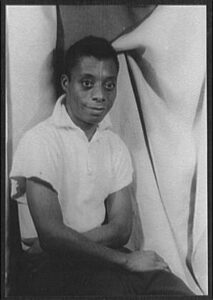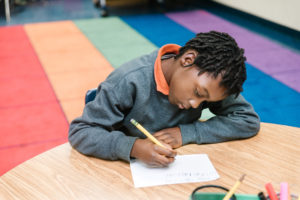A Place at the Table
I had a dream recently in which I was editing a paragraph. I wanted to trim every extra word—but made sure to preserve the phrase shadow and grace.
I’ll skip an exploration of all that the phrase holds at this particular juncture in human history, and simply ask: Who wrote it? In the dream, it was by an unknown author. On waking, I realized it recalled similar phrases I’ve heard and read. So was the phrase mine? Yes … and no.
Words belong to everyone and no one. When we write, we’re taking a seat at the communal table—sharing a poem, arguing a point, telling a story, laughing and weeping, responding vociferously or reflecting on others’ contributions.
Everyone deserves a place at the table.
Words belong to everyone and no one. When we write, we’re taking a seat at the communal table—sharing a poem, arguing a point, telling a story, laughing and weeping, responding vociferously or reflecting on others’ contributions. Everyone deserves a place at the table.
And as writers, we practice showing up in a way that commands attention. We apprentice ourselves, hone our craft. Gradually we develop the patience and the determination to wrangle sentences to say something new, true, and important. We come to love the process itself.
This love, and the belief that we can make a contribution to the larger discourse, are necessary to sustain us through the hard parts.
 Shadow and Grace
Shadow and Grace
Shadow: When students receive poor writing instruction, they learn to hate writing. They produce weak work that neither reflects nor advances their thinking.
Shadow: Many students inhabit identities that society has relegated to the margins. Told they have nothing to say, they get the message and act accordingly, making paper airplanes out of those journal pages before snoozing or secretly checking their phones.
Grace: Students who have been marginalized have within them untold stories, memoirs, poems, essays, pieces of opinion and documentation and advocacy that society needs.
Grace: Writing can be taught well.
Grace: We writing teachers can learn and employ best practices that help ALL of our students write pieces that wow us.
I’m counting more grace than shadows. The odds are working in our favor, so let’s dive in and discuss practical ways to improve equity in writing instruction.
#1: Use Facilitation Techniques and Cooperative Structures
“If we all have stories to tell, then we must also stop and listen to the stories others have to share with us. It has to be a two-way communication, which means really listening to the other person too.” –Saadia Faruqi, Author, A Thousand Questions

Saadia Faruqi
If we want all of our students to put themselves on the line, literally and figuratively, we need to create an atmosphere of trust and mutual support. Zaretta Hammond writes, “Relationships are the cornerstone of culturally responsive teaching.”
Facilitative techniques such as asking open-ended questions and using wait-time, coupled with cooperative structures, help build a true writing community in which all students know that they and their ideas matter. This is a necessary precondition for students to take risks with their writing and produce original work.
During whole-class discussions, open-ended questions help ensure that students dig deeper with their thinking, while wait-time encourages more than a handful of students to enter the discussion.
To use the cooperative structure “Turn to Your Partner,” the teacher asks a question; then students turn to face a partner and take turns sharing their ideas. Now everyone is getting a chance to express themselves verbally–a highly effective way to prime the writing pump. With “Think, Pair, Share,” students have a few moments to reflect before turning and talking. And with “Think, Pair, Write,” students funnel the ideas, language, and energy they’ve just generated through partner conversations directly onto the page.
Facilitation techniques and cooperative structures are invaluable during writing lessons. Better yet, using these approaches throughout the school day helps all students develop as confident speakers and thoughtful listeners who are more likely to approach writing time as a welcome opportunity to connect with themselves and others.
#2: Establish a Predictable Lesson Structure
“I’m often writing something almost every day. I keep journals: one on the computer, one for dreams, one for general observations and overheard things, and one for learning jazz standards….[I write best] when the airwaves are clear, either really early–like 6 a.m., 7 a.m., before anything is said–or really late.” –Joy Harjo, U.S. Poet Laureate

Joy Harjo (photo by Shawn Miller)
Humans have always known that rituals help generate invention and vision–and at the most basic level simply help us get stuff done. When we know how things happen, we feel less jangled and better able to connect with the task at hand.
Harjo has created a daily practice crucial for continuing to accrue and weave together the multiple strands of her creative work in the midst of a busy life. Similarly, when designing writing instruction it’s important to establish a reliable container where students feel safe taking creative and intellectual risks.
We recommend a simple, four-part process: preparation for the work; whole-class instruction; individual and small-group work; and lesson reflection. Implementing a durable framework like this can help students settle into their writing and ultimately gain independence and confidence.
And the more they can do that, the more the writing process itself will engage them. It’s a positive spiral.
#3: Foreground Voice and Choice
“I regret being scared. I regret wasting time thinking I wasn’t good enough, that I didn’t deserve a seat at the table.
You do belong and your voice is worthy. Say it to yourself in the mirror every morning if you have to, but don’t ever forget it.” –Jenna Wortham, Staff Editor, New York Times Magazine

Jenna Wortham
I don’t know whether Wortham’s words are more heartbreaking or inspiring. I do know we writing teachers have the means to help ensure that more young people don’t waste time doubting the worthiness of their voices.
We can make sure our writing curriculum gives all students equal opportunities to exercise their imaginations, express themselves, and explore their identities. (Their plural identities. We all have several, and many students face inequality based on more than one of their identities–for example, racial and class and gender identities.) Let’s not treat these opportunities as rewards to be deferred until our writers master the technical aspects of craft.
As Dr. Marisa Ramirez Stukey and National Writing Project Executive Director Elyse Eidman-Aadahl point out in “Writing for Life: The Evidence Base for Powerful Writing Instruction,” “Celebrating and amplifying student voice in writing is an essential aspect of quality writing instruction and is a way to cultivate the unique gifts and talents of each student.”
One way we can foreground voice and choice is by encouraging students to select their own topics and develop their own characters. Another is to provide opportunities to write in a variety of genres. Each genre stretches budding writers in a different way.
Through persuasive writing, they learn to present cogent arguments for their points of view. Through nonfiction they learn the importance and practice of backing up ideas with facts.
Personal narrative invites them to share their unique experiences. Fiction opens doors to imaginary worlds while also at times providing a scrim behind which hard truths can be shared safely. Poetry operates as a permissive zone where rules can be freely broken and words become raw material for creative expression, much like paint or modeling clay.
Down the road, having a panoply of genres at their disposal will allow our students to gravitate toward the ones that match their purposes and preferences while also enabling them to approach each piece with more versatility and skill.
#4: Teach the Writing Process
“I never have a problem finding enough words; I have to cut pieces down. That is usually the hard part. What goes? What stays?” –Ken Mochizuki, Author, Baseball Saved Us

Ken Mochizuki
Mochizuki grapples with trimming his drafts; other authors struggle to generate enough language. Each of us brings to the page our own assortment of strengths and weaknesses. But in the writing process we find a structure that helps us work through our individual quirks to produce a piece of solid work.
The writing process is an indispensable tool in our equity toolkit. As Hammond makes clear, we must disrupt the historical tendency to underestimate what our disadvantaged students are capable of intellectually.
Culturally responsive teaching includes helping every student move toward independence. Teaching our students a tried-and-true series of steps that can be internalized over time does just that. I’ve written about Collaborative Classroom’s use of the writing process elsewhere, but here I’ll just note that it includes generating ideas and inspiration through mentor texts, discussion, and quick-writes; writing first drafts; revising; proofreading; and sharing with an audience–with plenty of teacher support and peer input along the way.
#5: Create Authentic Purposes
“Stories can save lives and it’s never been truer than in my case, where I am determined to stay alive by pushing back at everything that says people like me are expendable and not worth saving.” –Alice Wong, Author, Year of the Tiger (forthcoming 2022)

Alice Wong (credit: Eddie Hernandez Photography)
Disability rights advocate Alice Wong writes with a burning purpose. Not every piece of writing needs to have this level of urgency, but like any of us, students write better and more eagerly when they know their work will have an impact–one more meaningful than demonstrating compliance by turning in assigned work.
Students can present finished pieces to their peers from the Author’s Chair, a powerful demonstration that every voice in the class matters. This celebrates the students’ hard work throughout the writing process, while providing practice in skills such as oral presentation, listening, and responding in thoughtful, kind ways.
Besides the Author’s Chair, other purposes can be established for different types of writing. Students might share persuasive pieces on a classroom or school blog, inviting responses by others in the community, or send them to elected officials. Fiction pieces or personal narratives might be bound together in a book to be featured in the classroom or school library.
Expository nonfiction writing might be done in the form of exhibit materials for a student-created “museum” addressing a particular topic or theme, replete with artifacts created or collected. Poems might be incorporated into a school mural. The sky (a.k.a. your imagination) is the limit.
#6: Provide Wide-Ranging Mentor Texts
“Chicana Falsa: And Other Stories of Death, Identity, and Oxnard [by Michele Serros] marks the moment on my timeline when I discovered that I had a voice, and that that voice was bilingual and it was just as valid as any other voice. It was truly an awakening. Bilingual people wrote stories, poems, and books that were taught in colleges? And even used SPANGLISH?!”
–Isabel Quintero, Author, My Papi Has a Motorcycle

Isabel Quintero (credit: Charles Lenida)
Carefully chosen mentor texts do heavy lifting when it comes to both inspiring young writers and teaching them craft. And students need mentor texts that reflect their own identities as well as give them access to others’ identities and experiences.
I’m guessing you’re familiar with Dr. Rudine Sims Bishop’s oft-quoted language about the importance of providing our students with windows, mirrors, and sliding glass doors via multicultural literature. There’s a reason we’ve heard this metaphor a lot–it’s profoundly true, and nowhere more so than in the context of writing lessons.
Quintero’s quote speaks to the earth-shattering impact that multicultural, #OwnVoices texts (texts by diverse individuals based on their own experiences) can have on students. Thanks to the impetus provided by movements such as #MeToo, #BlackLivesMatter, and #WeNeedMoreDiverseBooks, more and more Own Voices texts are being published.
If we want all of our students to light up and lean forward into read-alouds and writing prompts, getting these texts into our classrooms and libraries is a necessary step.
#7: Write
“…for the first 8 years of my teaching career I never once completed a writing task that I assigned my students. It wasn’t until Holden in my 1st period 5 years ago, asked, “So, what is your poem going to be about, Mr. Briseño?” … Entirely unaware, Holden was inviting me into 1st period’s community of practice. I was on the outside, or more accurately, I was at the top of the pyramid and community was scarce.” –Stephen Briseño, Educator

Stephen Briseño
Writing alongside our students is a profoundly supportive act. We don’t need to be accomplished authors by any means. But we can demonstrate that we view writing as truly important, and gain a profound understanding of our students’ writing challenges and breakthroughs, by putting pencil to paper alongside them.
As Dr. Ibram X. Kendi has said, part of the teacher’s role is to serve as a “model of vulnerability, of self-criticism.” When students see us check a fact or wrestle with the cadence of a sentence, they gain motivation for chipping away at the craft of writing. When we draft our own stories about the birth of a sibling or the loss of a treasured friend, we build an atmosphere of vulnerability that elicits writing with much more at stake than a grade.
#8: Assess for Individual Growth
“…a real writer is always shifting and changing and searching. The world has many labels for him, of which the most treacherous is the label of Success.”
–James Baldwin, Author, Nobody Knows My Name

James Baldwin (credit: Library of Congress)
As teachers it is so difficult to maintain a whole-child approach to students’ academic development. We join the larger culture in pushing students toward standardized measures of achievement. Isn’t a higher score better? Doesn’t “best” mean something?
These measures are what we have, and it is our job to use them. But it’s worth stepping off the wheel entirely for a moment and listening to one of our greatest writers.
Baldwin resisted the treachery of labels on every front–even the label of success. As a great writer he knew that every time you pick up your pen you must be ready to write the truth as it comes to you now, here, in this form. And that being told what you are–even being told that you are a success–dampens this readiness to discover and learn.
It’s as American as apple pie to strive for success. But an even yummier and more nutritious version of the pie is this: each of our voices is unique and important and constantly evolving. If we believe in serving nourishing pastry for all at the communal table, we need to help our students fall in love with bringing their best, not being the best. That translates into lots of supportive formative assessment during the writing process and across writing projects, avoiding student-to-student comparisons, and holding standardized testing lightly.
 Shadow and Grace, Redux
Shadow and Grace, Redux
Shadow: Our society’s severe inequities won’t evaporate by tomorrow.
Shadow: We long to do every single thing possible for our students, pronto, to provide ideal and equitable learning conditions for them. We can feel too small for the job.
Grace: If you’re reading this, I’m guessing you’ve already committed to providing equitable writing instruction, and are doing lots well. Bravo! As a next step, you might pick one item from the list above to implement or improve next, and make a plan for addressing the rest.
Grace: As we continue to work toward making space for all at the communal table, we will see results. Our students will generate powerful, authentic writing that feeds us and our world.
Grace: We can give it to our young writers … and we can give it to ourselves.These are a few of the ways I understand the phrase shadow and grace in the context of equitable writing instruction. How about you?
